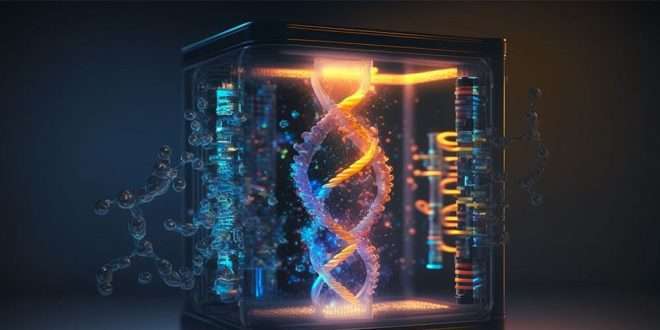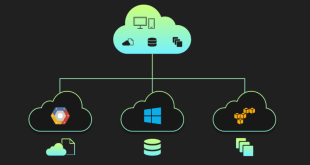At the forefront of scientific innovation, DNA data storage has emerged as a transformative technology that leverages the remarkable properties of DNA molecules to store vast amounts of digital information. Unlike conventional methods, DNA data storage holds the promise of longevity, density, and unparalleled data preservation. In this blog, we explore the capabilities, benefits, and challenges of harnessing DNA for cloud storage, a technology that could reshape the way we safeguard and access data for generations to come.
Understanding the Essence of DNA Data Storage
DNA as the Ultimate Storage Medium
Deoxyribonucleic acid, better known as DNA, is the fundamental building block of life. Its remarkable properties enable it to store genetic information in living organisms. Now, scientists have unlocked its potential to store digital data in the form of binary code – zeros and ones. DNA’s intrinsic ability to preserve information for thousands of years, under the right conditions, makes it an ideal candidate for long-term data archival.
Data Storage Capacity Beyond Imagination
The storage capacity of DNA is truly mind-boggling. A single gram of DNA can potentially hold exabytes of data, equivalent to billions of gigabytes. To put this in perspective, the entire internet is estimated to consist of approximately 44 zettabytes of data in 2021, and DNA can easily dwarf that figure. This extraordinary density makes DNA data storage an enticing solution for the ever-growing volumes of digital information.
The Process of DNA Data Storage
Encoding Data into DNA
The process of encoding digital data into DNA involves converting the binary code (0s and 1s) of digital information into the chemical language of DNA’s nucleotide bases: adenine (A), cytosine (C), guanine (G), and thymine (T). Scientists use various encoding techniques to map the binary data onto DNA sequences.
Synthesizing DNA Molecules
Once the data is encoded, the next step is to synthesize actual DNA molecules. This process is typically performed by machines that assemble the nucleotide bases in the desired sequence, creating synthetic DNA strands that represent the stored data.
Storing and Retrieving DNA Data
The synthesized DNA strands are then stored in a stable and secure environment, ensuring their preservation for extended periods. To retrieve the data, the DNA is sequenced, and the encoded binary information is translated back into its digital form using specialized decoding algorithms.
Advantages of DNA Data Storage
Unparalleled Data Longevity
One of the most significant advantages of DNA data storage is its exceptional longevity. Unlike traditional storage mediums that degrade over time, DNA can persist for thousands of years if stored under appropriate conditions. This makes DNA an ideal choice for preserving critical historical, scientific, and cultural information.
Incredible Data Density
DNA’s immense data storage capacity allows for data to be stored in an incredibly compact form. This can drastically reduce the physical space and energy requirements for data centers, paving the way for a more sustainable and efficient data storage infrastructure.
Enhanced Data Security
DNA data storage offers a high level of security, as it is not susceptible to cyber-attacks or hardware failures that commonly afflict traditional data storage methods. With the data physically stored in DNA molecules, the risk of unauthorized access is significantly minimized.
Challenges and Future Prospects
Cost and Accessibility
Currently, DNA data storage remains a costly endeavor due to the complexity of the encoding and synthesis processes. As technology advances and economies of scale come into play, the costs are expected to decrease, making DNA data storage more accessible.
Data Retrieval Speed
Retrieving data from DNA can be a time-consuming process compared to traditional methods. As researchers refine the sequencing and decoding techniques, the data retrieval speed is likely to improve, making DNA data storage more practical for real-time applications.
Integration with Existing Infrastructure
Integrating DNA data storage with existing cloud infrastructure and data management systems poses a challenge. However, ongoing research and collaborations between biologists, computer scientists, and data experts are working towards seamless integration.
Final Words
DNA data storage represents a revolutionary leap in the field of cloud storage and data archival. Its unparalleled capacity, longevity, and security make it a promising solution for meeting the demands of an increasingly data-driven world. As technology continues to evolve, DNA data storage holds the potential to transform the landscape of data storage and preservation, ensuring a lasting legacy for generations to come.
Commonly Asked Questions
Q1: How long can DNA store data?
DNA can potentially store data for thousands of years under optimal storage conditions. This makes it an excellent choice for long-term data archival.
Q2: Is DNA data storage secure?
Yes, DNA data storage offers enhanced security compared to traditional methods. The physical nature of DNA storage reduces the risk of cyber-attacks and unauthorized access.
Q3: What are the limitations of DNA data storage?
Currently, the cost and data retrieval speed are among the main limitations of DNA data storage. However, ongoing research aims to address these challenges and make DNA storage more practical and cost-effective.
Q4: Can DNA data storage be integrated with existing cloud infrastructure?
Integrating DNA data storage with existing cloud infrastructure is a complex task. However, ongoing collaborations and advancements in technology are working towards seamless integration.
Q5: What are the potential applications of DNA data storage?
DNA data storage has a wide range of applications, including long-term data archival, preserving historical records, storing vast scientific datasets, and ensuring the accessibility of crucial information for future generations.
 webfily
webfily



